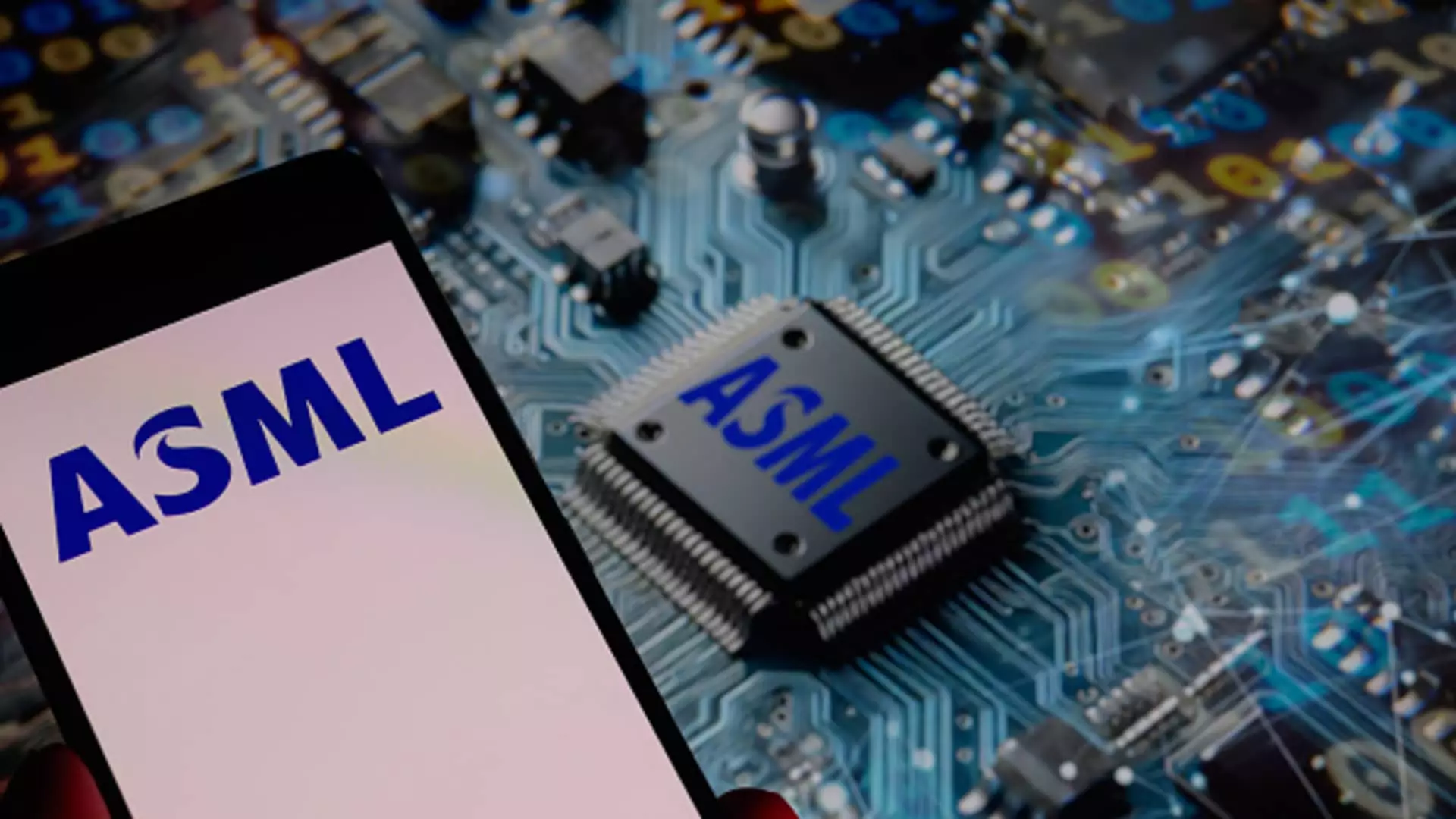Despite beating Wall Street’s expectations in the recent quarter, ASML’s latest financial results reveal a troubling undercurrent of instability that cannot be ignored. The Dutch semiconductor powerhouse’s ability to surpass revenue and profit estimates might seem like a positive sign on the surface, but the company’s cautious outlook and ambiguous forecast for 2026 expose a more complex and worrying picture. Investors and industry observers should be wary of celebrating prematurely, as the company’s narrative suggests a deeper volatility driven by external forces beyond its control.
What stands out most about ASML’s recent disclosures is not just the beat but the uncertainty looming on the horizon. The company’s acknowledgment that there may be no growth in 2026 is telling. It signifies that even a sector as lucrative and technologically advanced as semiconductors is vulnerable to macroeconomic shocks and geopolitical tensions. The attenuation of confidence at this strategic juncture should serve as a wake-up call to stakeholders: resilience alone might not suffice when external factors threaten to derail the entire industry.
Impacts of Geopolitics and Economics on Innovation and Innovation’s Future
ASML’s revenue slowdown and the vague forecast for 2026 highlight the fragile state of global technology supply chains. The U.S. tariffs and trade restrictions have imposed significant hurdles, complicating global partnerships and hindering innovation. While ASML reported strong sales driven partly by AI demand, it became evident that these drivers are fragile. The sector’s dependence on geopolitical stability makes its future precarious and exposes fundamental flaws in how innovation strategies are intertwined with unpredictable political agendas.
The company’s current quarter results—even though better than expected—offer a false sense of security. The reliance on existing machines being upgraded and tariffs having less negative impacts can only carry the industry so far. ASML’s investments in next-generation EUV tools, particularly the High NA series, suggest an optimistic outlook, but this optimism is undercut by the broader climate of uncertainty. Larger, more expensive machines costing hundreds of millions are not a sign of sustainability; they are a gamble on a future that remains increasingly unpredictable.
Is Innovation in the Semiconductor Industry Sustainable in Unstable Times?
One of the core issues facing ASML—and the semiconductor industry at large—is whether relentless technological innovation can sustain growth when external factors threaten to destabilize markets. ASML’s dependence on AI-related demand and the deployment of cutting-edge EUV machines serve as a testament to the industry’s drive for progress. But this progress may be superficial if geopolitical and macroeconomic storms continue to intensify.
The industry’s focus on monumental investments in high-cost equipment may be shortsighted during periods of heightened uncertainty. These machines are pivotal for manufacturing advanced chips, yet their deployment is slowed by political restrictions and economic fluctuations. The optimism about AI-driven growth, while justified in the short term, risks being a mirage if broader geopolitical conflicts and economic downturns dampen demand or restrict access to critical markets.
ASML’s cautious stance on 2026 reflects a sobering reality: we are entering an era where technological ambitions are increasingly at odds with geopolitical realities, and the continuous pursuit of innovation may no longer be enough to guarantee sustained growth. The industry must confront the possibility that, in turbulent times, strategic resilience and adaptability become more vital than ever. The promise of high-tech sovereignty and global collaboration is disintegrating before our eyes, revealing the fragility of a sector that once seemed unstoppable.

